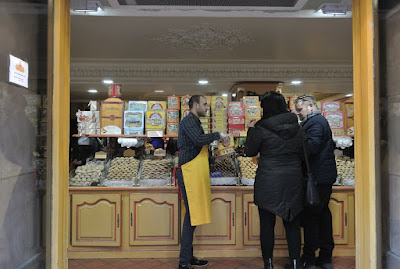Sunday November 13 is our last day of touring and winemaker dinners, so it will be our last post for this trip. Last night we cruised from Kehl to Breisach in Germany. There were 7 locks to go through that night. We spend time learning about the logistics of disembarking tommorow and then leave for Riquewihr, France. We start in Germany and cross over the Rhine into France.
 |
| The AmaPrima docked in Breisach, Germany. The other side is France. |
The town is Riquewihr and it is a small town of about 1,300 residents set in the wine growing Alsace Region of France. The town is known for its historical architecture, is also known for the Riesling and other great wines produced in the village. Riquewihr looks today more or less as it did in the 16th century. It is officially one of the most beautiful villages in France, or Les plus beaux villages de France. Originally the property of the Dukes of Württemberg, the town was converted to Protestantism in the 16th century. Historically, Riquewihr served as a wine village and as a trading hub for Alsatian and German wine.
 |
| Homes built into fortification wall surrounding Riquewihr |
Riquewihr was one of the few towns in the area not to be badly damaged during World War II. The town is surrounded by its medieval fortifications and is overlooked by a castle from the same period that is today a museum. Today the village is popular with tourists and there are many nice shops and restaurants. We sample the local wine at an underground tasting room at Masion Zimmer. It is very nice and basically the same wines as we had the day before. We tour the town checking out all the local sites.
 |
| Underground tasting room at Masion Zimmer. |
We head back to the AmaPriva for our last winemaker dinner hosted by Bella Wines. The dinner was very good and the winery brought some very nice wines for the occasion. We will do a separate posting on the menus when we get home. After dinner all remaining wines were opened and everyone thought it was a wonderful finish to a great week.
 |
| Dessert. Chocolate Molten Gateau, Raspberry Sorbet, Chocolate Soup, paired with Bella's 2015 Late Harvest Zinfandel |
The next day was basically a travel day. The boat docked at Basel Switzerland and we accompanied our friends to the airport in Zurich after which they went to their hotel. We traveled home on a nonstop Swiss Air flight from Zurich to San Francisco, and it was over. A great time that was over 2 years in the planning but well worth it.


















































